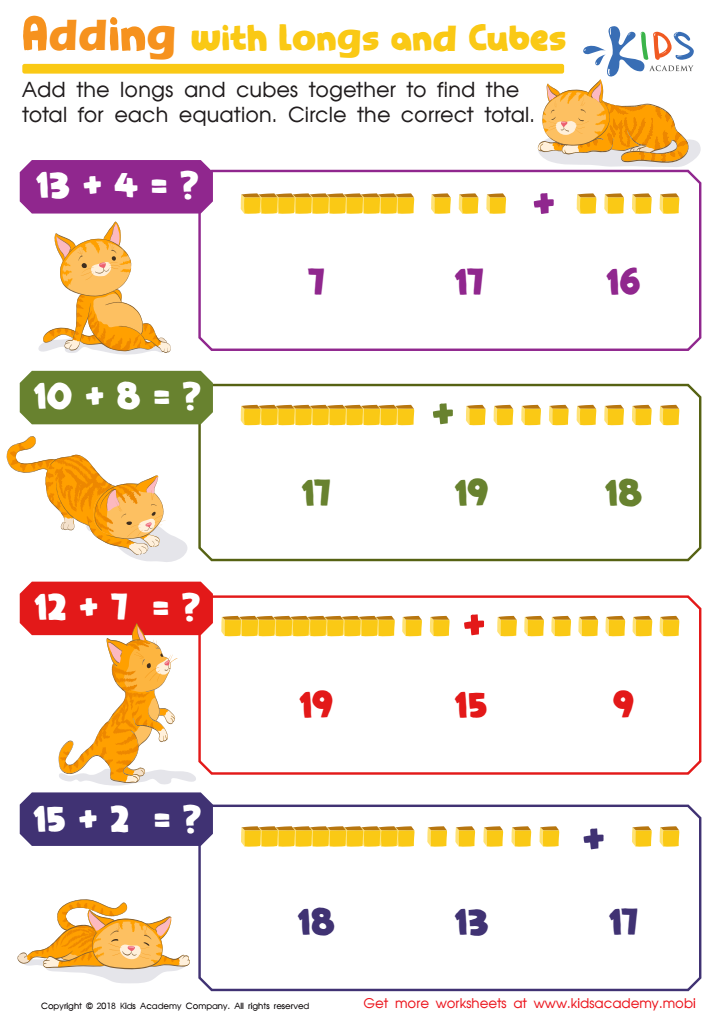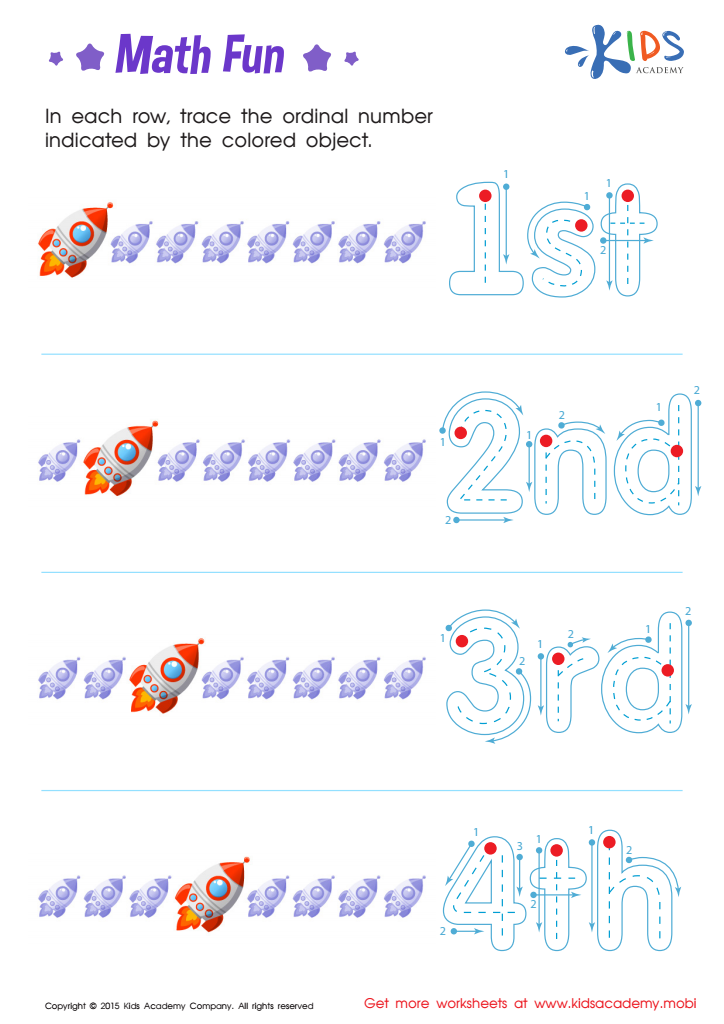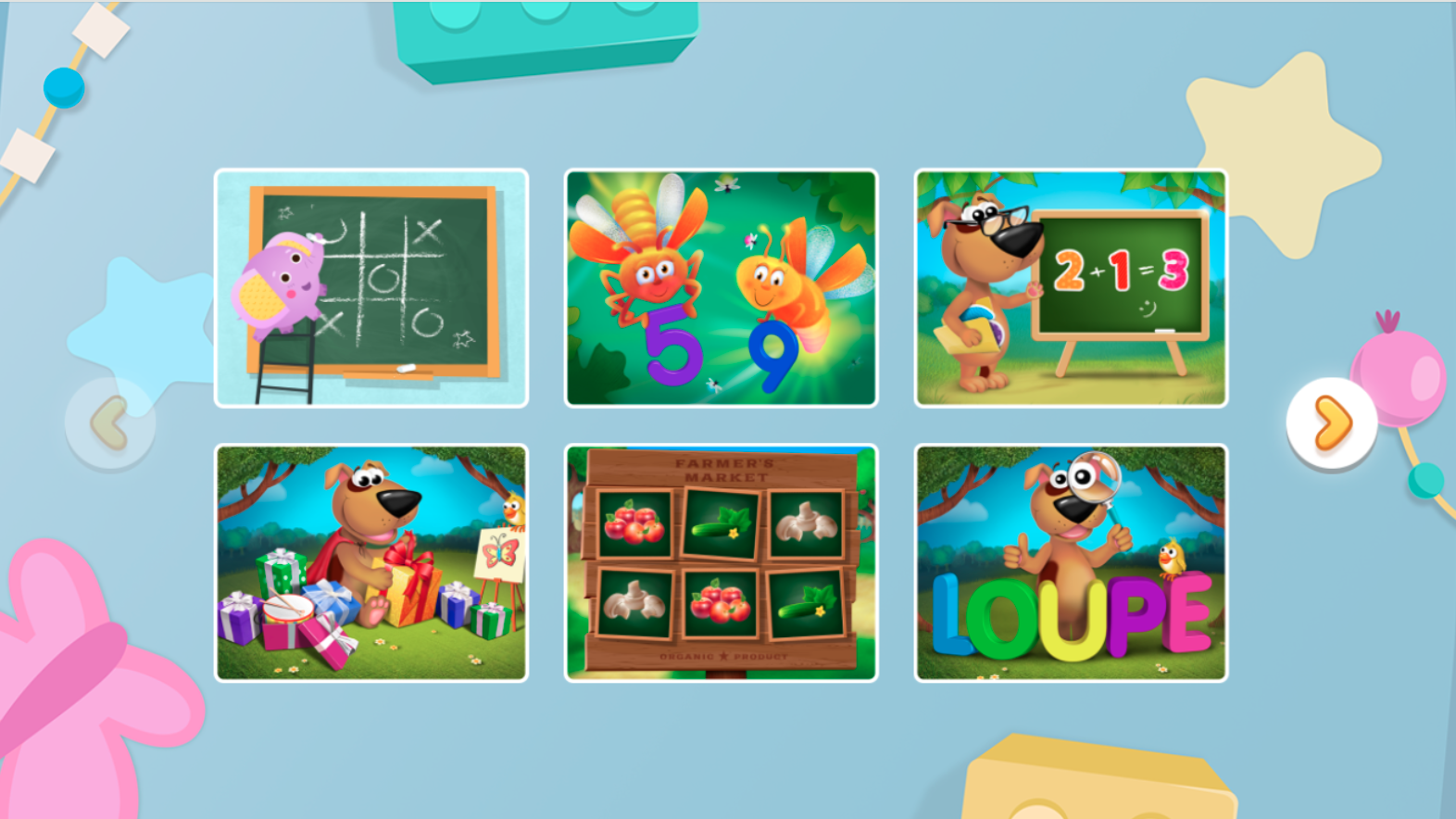Understanding shapes Normal Math Worksheets for 6-Year-Olds
3 filtered results
-
From - To
Introduce your 6-year-old to the fun world of geometry with our "Understanding Shapes" math worksheets! Designed to blend learning with play, these printable worksheets help young kids identify and differentiate between common shapes such as circles, squares, triangles, and more. Age-appropriate activities foster spatial awareness and critical thinking, ensuring your child builds a strong foundation in math. Vibrant visuals and engaging exercises captivate young minds, making learning enjoyable and effective. Ideal for at-home practice or classroom use, these worksheets support your child’s mathematical journey. Explore now and watch your child master the magnificent world of shapes!


Adding With Longs and Cubes Worksheet


Ordinal Numbers: Math Fun Worksheet


Three–Dimensional Shapes: Cylinder Worksheet
Understanding shapes is a foundational aspect of early math education for 6-year-olds, laying the groundwork for more complex mathematical concepts. Parents and teachers should care about this for several reasons.
Firstly, shape recognition enhances spatial reasoning, vital for problem-solving skills in math and everyday life. When children can identify and classify shapes, they develop the ability to understand relationships and properties of objects in space, which is crucial for geometry later on.
Secondly, learning shapes helps improve cognitive and language development. As children learn to name and describe shapes, they enhance their vocabulary and descriptive language skills. This verbal articulation is important for effective communication and detailed explanations.
Furthermore, shapes are everywhere in the real world, from the rectangular doors to circular clocks. Recognizing these shapes helps children to make sense of their environment, enhancing their observational skills and arousing their curiosity.
Additionally, familiarizing with shapes can aid in recognizing numbers and letters, as these often have distinct shapes. This pre-reading skill is essential for literacy development.
Finally, engaging with shapes through fun activities like drawing or puzzles makes learning enjoyable, fostering a positive attitude towards math. By valuing the understanding of shapes, parents and teachers set children on a path of eager and successful mathematical exploration.

 Assign to My Students
Assign to My Students
















